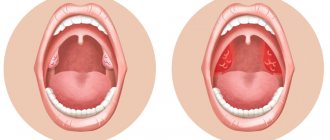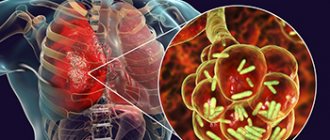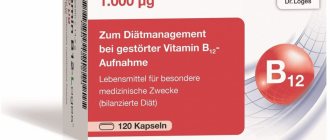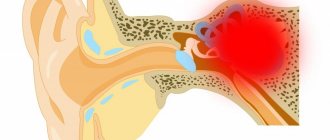Composition and release form
Capsules - 1 capsule:
- active substance: azithromycin dihydrate - 262.03 mg, equivalent to azithromycin - 250.00 mg;
- excipients: lactose - 132.3 mg, corn starch - 33.0 mg, sodium lauryl sulfate - 2.0 mg, magnesium stearate - 8.0 mg;
- hard gelatin capsules No. 0, body and cap: quinoline yellow dye, sunset yellow dye, titanium dioxide, gelatin, purified water, sodium lauryl sulfate, propyl parahydroxybenzoate (propylparaben), methyl parahydroxybenzoate (methylparaben);
- black ink: (shellac, anhydrous ethanol, isopropanol, isobutanol, propylene glycol, ammonium sulfate concentrated solution, black iron oxide dye, sodium hydroxide, purified water).
Capsules 250 mg.
6 capsules in an aluminum/PVC blister, 1 blister along with instructions for use in a cardboard box.
pharmachologic effect
Antibiotic - azalide.
Pharmacokinetics
Absorption - high, acid-resistant, lipophilic. Bioavailability after a single dose of 0.5 g is 37% (the “first pass” effect through the liver), maximum concentration after oral administration of 0.5 g is 0.4 mg/l, time to reach maximum concentration is 2.5-2.9 hours; in tissues and cells the concentration is 10-50 times higher than in blood plasma, the volume of distribution is 31.1 l/kg. Easily passes through histohematic barriers.
Penetrates well into the respiratory tract, genitourinary organs and tissues, incl. prostate gland, skin and soft tissues.
Penetrates through cell membranes and creates high concentrations in them, accumulates in lysosomes (which is especially important for the eradication of intracellular pathogens). It is also transported by phagocytes: polymorphonuclear leukocytes and macrophages.
The concentration in foci of infection is significantly higher (24-34%) than in healthy tissues, and correlates with the severity of inflammatory edema. Remains in effective concentrations for 5-7 days after taking the last dose. Plasma protein binding is 7-50% (inversely proportional to blood concentration).
It is demethylated in the liver and inactive metabolites are formed. The metabolism of the drug involves isoenzymes CYP3A4, CYP3A5, CYP3A7, of which it is an inhibitor.
Plasma clearance - 630 ml/min. The half-life between 8 and 24 hours after administration is 14-20 hours, the half-life between 24 and 72 hours is 41 hours.
50% is excreted unchanged in bile, 6% by the kidneys.
Food intake significantly changes the pharmacokinetics: maximum concentration and area under the “conspiracy” curve, lowering blood pressure, ventricular tachycardia, increasing the QT interval, bidirectional ventricular tachycardia, “flushing” of blood in the face.
From the digestive system: gastritis, bloating, pancreatitis, nausea, vomiting, diarrhea, abdominal pain/cramps, flatulence, belching, indigestion, anorexia, constipation, discoloration of the tongue, pseudomembrane colitis, cholestatic jaundice, fulminant hepatitis, impaired liver function , liver failure, liver necrosis (possibly fatal), gastroenteritis, dysphagia. dryness of the oral mucosa, ulcers of the oral mucosa. increased secretion of the salivary glands.
Allergic reactions: itching, skin rashes, angioedema, urticaria, eosinophilia, anaphylactic reaction, including angioedema (in rare cases fatal), erythema multiforme, Stevens-Johnson syndrome, Lyell's syndrome, hypersensitivity reaction.
From the musculoskeletal system: arthralgia, osteoarthritis, myalgia, back pain, neck pain.
From the genitourinary system: interstitial nephritis, acute renal failure, pain in the kidneys, metrorrhagia, testicular dysfunction, dysuria.
From the respiratory system: pneumonia, pharyngitis, respiratory diseases, rhinitis, shortness of breath, nosebleeds.
From the skin: dermatitis. dry skin, sweating.
Other: vaginitis, candidiasis, photosensitivity, malaise, feeling of fatigue, chest pain, peripheral edema, facial edema, fever.
Laboratory indicators: decreased number of lymphocytes, increased activity of aspartate aminotransferase, alanine aminotransferase; in blood plasma: increased number of basophils, monocytes, neutrophils, decreased or increased bicarbonate concentration, increased alkaline phosphatase activity, increased chlorine content, increased glucose concentration, increased platelet count, increased hematocrit, change in sodium content, increased bilirubin concentration, increased urea concentration, change in potassium content.
Drug interactions
Antacids do not affect the bioavailability of azithromycin. but reduce the maximum concentration in the blood by 30%, so the drug should be taken one hour before or two hours after taking these drugs and eating.
Azithromycin does not affect the concentration of carbamazepine, didanosine, rifabutin and methylprednisolone in the blood when used together.
In pharmacokinetic studies of the effect of a single dose of cimetidine on the pharmacokinetics of azithromycin, no changes in the pharmacokinetics of azithromycin were detected when cimetidine was used 2 hours before azithromycin.
Concomitant use of azithromycin (600 mg/day once) and efavirenz (400 mg/day) daily for 7 days did not cause any clinically significant pharmacokinetic interaction.
Concomitant use of azithromycin (1200 mg once) did not change the pharmacokinetics of fluconazole (800 mg once). The total exposure and half-life of azithromycin were not affected by concomitant use of fluconazole. however, a decrease in Cmax of azithromycin was observed (by 18%). which had no clinical significance.
Concomitant use of azithromycin (1200 mg once) did not cause a statistically significant effect on the pharmacokinetics of indinavir (800 mg three times a day for 5 days).
Concomitant use of azithromycin with cetirizine (20 mg) for 5 days in healthy volunteers did not lead to pharmacokinetic interaction or a significant change in the QT interval.
When used in healthy volunteers, there was no evidence of the effect of azithromycin (500 mg/day daily for 3 days) on the AUC and Cmax of sildenafil or its main circulating metabolite.
Azithromycin does not affect the bioavailability of co-trimoxazole.
No significant changes in pharmacokinetic parameters were detected with simultaneous use of azithromycin with triazolam or midazolam in therapeutic doses.
Neutropenia has occasionally been observed with concomitant use of azithromycin and rifabutin, although neutropenia has been associated with the use of rifabutin; a causal relationship between the use of the combination of azithromycin and rifabutin and neutropenia has not been established.
Azithromycin does not affect the pharmacokinetics of theophylline; however, when taken together with other macrolides, the concentration of theophylline in the blood plasma may increase.
If combined use with cyclosporine is necessary, it is recommended to monitor the concentration of cyclosporine in the blood plasma and adjust the dose accordingly.
When taking digoxin and azithromycin together, it is necessary to monitor the concentration of digoxin in the blood, because simultaneous use of macrolide antibiotics, including azithromycin, and P-glycoprotein substrates, such as digoxin. leads to an increase in the concentration of the substrate P-glycoprotein in the blood plasma.
If co-administration with warfarin is necessary, careful monitoring of prothrombin time is recommended.
It was found that the simultaneous use of terfenadine and macrolide antibiotics causes arrhythmia and prolongation of the QT interval. Based on this, the above complications cannot be excluded when terfenadine and azithromycin are used together.
Since there is a possibility of inhibition of the CYP3A4 isoenzyme by azithromycin in parenteral form when used together with cyclosporine, terfenadine, ergot alkaloids, cisapride, pimozide, quinidine, astemizole and other drugs whose metabolism occurs with the participation of this enzyme, the possibility of such interaction should be taken into account when prescribing azithromycin for administration inside.
Given the theoretical possibility of ergotism, the simultaneous use of azithromycin with ergot alkaloid derivatives (ergotamine and dihydroergotamine) is not recommended.
When used concomitantly with zidovudine, azithromycin has little effect on the pharmacokinetics, including renal excretion, of zidovudine or its glucuronide metabolite.
Azithromycin weakly interacts with cytochrome P450 isoenzymes. It has not been revealed that azithromycin is involved in pharmacokinetic interactions similar to erythromycin and other macrolides; azithromycin is not an inducer or inhibitor of cytochrome P450 isoenzymes.
The simultaneous use of azithromycin (1200 mg) and nelfinavir (750 mg 3 times a day) causes an increase in the equilibrium concentration of azithromycin in the blood plasma; no clinically significant side effects were observed and no dose adjustment of azithromycin is required when used simultaneously with nelfinavir.
There have been isolated case reports of rhabdomyolysis in patients taking azithromycin and statins concomitantly.
Publications
Acne or acne disease (AC) is one of the most pressing problems of modern dermatology. The increased interest in this skin pathology is explained, according to Cunlife, a famous scientist who has been fruitfully working on the problem of acne for many years, by the fact that “all over the world there are not only more patients with acne, but an increase in the number of intractable forms.”
In his opinion, this may be due to the deterioration of the ecological situation on Earth, which leads to an increase in genetic disorders in the population, as well as an increase in resistance to drugs, primarily to antibiotics (3).
Acne is a genetically determined, long-term polymorphic multifactorial disease of the skin, sebaceous glands and hair follicles. Acne is one of the most common skin diseases in young people, occurring in 85% of boys and girls aged 12 to 24 years, and in 10% it persists until the age period of 25 to 45 years. Most women experience spontaneous reversal of acne by the age of 25. Only 11% of acne occurs at the age of 25–35 years and in 5% at the age of 40 years and older. Recently, there has been a trend towards an increase in the number of women whose acne debuts at the age of 25 years and older.
The complex influence of genetic factors remains the subject of study, but the genetically determined type of secretion of the sebaceous glands during puberty plays an important, if not the main, role.
According to K.N. Suvorova et al. (1), different expressivity and allelic variations of genes that determine the development of sebaceous glands, their functional ability and enzyme activity can play a large role in the development of ulcer and to a large extent determine the severity of clinical manifestations. There are reports of the presence of a nuclear R factor that determines genetic predisposition. These facts can probably explain the development of mild forms of PD in some people, and severe forms of UP in others. A history of acne in both parents creates a 50% chance of developing severe acne in an adolescent (1).
It is known that human skin, primarily its appendages (hair follicles, sebaceous and sweat glands), has steroid-sensitive receptors that perceive hormone-regulating influences on the development and secretory activity of these structures. During puberty, these interactions begin to actively manifest themselves. The main cutaneous targets for sex steroids are the epidermis, hair follicles, sebaceous glands, melanocytes and fibroblasts.
The German scientist S. Schmitz called the skin the largest endocrine gland in the human body. The skin takes an active part in the metabolism of steroid sex hormones, in particular in the extraglandular formation of androgens from precursor steroids, being at the same time the main target tissue for androgens.
The skin is a peripheral part of the metabolism of male sex hormones; their action is carried out through specific androgen receptors, which are found in various androgen-dependent structures of the skin. Stimulation of androgen receptors increases mitotic activity and differentiation of epidermal cells, increases the synthesis of intercellular lipids, stimulates hair growth and sebum secretion (3).
An important aspect is the participation in the development of inflammation by Propionibacterium acnes: they synthesize various chemoattractants that attract leukocytes to the site of inflammation, lipases and a number of enzymes that lead to damage to the follicle wall; produce vasoactive amines like histamine, which increase inflammation.
A generally accepted classification of UX has not yet been developed. There are a large number of classifications that are based either on the clinical manifestations of the disease or on an assessment of its severity.
classification in dermatological practice is proposed by the American Academy of Dermatology. According to this classification, the following degrees of severity of UD are distinguished:
– 1st degree – characterized by the presence of comedones (closed and open) and up to 10 papules;
– 2nd degree – comedones, papules, up to 10 pustules;
– 3rd degree – comedones, papulopustular rash, up to 3 nodes;
– 4th degree – a pronounced inflammatory reaction in the deep layers of the dermis with the formation of multiple painful nodes and cysts.
Among the clinical manifestations of UB, the most common is the papulopustular form – 70–80% of cases. The comedonal form and the most severe manifestations of acne – acne conglobata – occur in 10-15% of patients.
There are several approaches to treating UP. Treatment tactics depend on the severity and prevalence of clinical symptoms. In addition, it is necessary to take into account age, gender, and the presence of concomitant pathologies. The treatment plan is based on an assessment of the severity of the clinical course.
For mild forms of urticaria, external therapy is sufficient. Moderate and severe urticaria require a combination of systemic and external therapy (2.5).
External therapy consists of prescribing shaken suspensions, including sulfur, resorcinol, salicylic acid; benzoyl peroxide gel. In modern external therapy, tretinoin, azeloic acid, and topical antibacterial agents are also used, among which the most popular are tetracyclines, erythromycin and clindamycin. They reduce the contamination of P. acnes on the surface of the skin and in the follicles. In addition, antibiotics have an anti-inflammatory effect, inhibiting leukocyte chemotaxis, and regulate the content of free fatty acids in surface fats.
Modern systemic therapy for UP includes antibiotics, retinoids, antiandrogen replacement therapy and glucocorticosteroid drugs. Sufficiently long courses of these drugs have an anti-inflammatory effect, normalize keratinization in the follicles, and affect the composition of sebum.
Some treatment regimens for fulminant acne include salicylates, glucocorticosteroids, and dapsone.
Systemic medications for patients with acne, as indicated above, are prescribed for moderate and severe disease. Of the large list of antibacterial agents, only a few can be recommended for the treatment of acne. Considering the fact that antibiotics are prescribed for quite a long time for ulcerative ulcers, they should have low toxicity.
Penicillin was ineffective for urticaria, and sulfonamides were difficult to tolerate by patients. Antibacterial drugs with anti-inflammatory properties, such as tetracycline (and its derivatives - doxycycline, minocycline) and macrolides (erythromycin and azithromycin) are the drugs of choice for papullo-pustular acne.
The use of tetracycline in the treatment of acne is due to its ability to renew the content of free fatty acids in surface lipids. The dose of tetracycline was established through clinical experience; for other drugs, the dose was selected in terms of tetracycline.
Without specific justification, some dermatologists consider antibiotic therapy for acne only as an antibacterial effect on the pathological process. In this regard, it is necessary to dwell on the various justified motivations for the use of both systemic and topical antibacterial agents for ulcerative disease. It should be noted that acne is not an infectious disease, but antibiotics are included in treatment regimens for this disease as an important element. First, P. acnes was sensitive to all antibiotics active against Gram-positive pathogens. Secondly, all effective drugs reduce the number of P. acnes by 90% or more, reducing the proportion of free fatty acids in surface lipids by 50%. Fatty acid levels can be reduced without any apparent effect on P. acnes. One of the proven mechanisms for inhibiting bacterial growth is a decrease in the concentration of fat-splitting lipases. Tetracyclines inhibit bacterial lipases more effectively than erythromycin, which leads to the expected therapeutic effect. Antibiotics, especially tetracycline, as well as sulfones provide a pharmacological effect that is not directly related to bacterial inhibition. They have a moderate anti-inflammatory effect, affecting neutrophil chemotaxis and macrophage functions. These drugs are also effective for rosacea, perioral dermatitis, and pityriasis lichenoides, which are not caused by bacteria.
Currently, only two groups of antibiotics are used in the treatment of acne: tetracyclines and macrolides. Comparative characterization is often based on measuring drug concentrations in the blood, but this is not sufficient. The level of an antibiotic in the blood does not provide information about its concentration in target tissues. Lipophilic tetracyclines, such as minocycline, penetrate better into lipid-rich sebaceous follicles and microcomedones. Doxycycline monohydrate has the same effectiveness as minocycline, but does not cause side effects on the central nervous system.
Macrolides constitute a valuable alternative to tetracyclines (4). Their significant advantage is the possibility of administration during pregnancy and lactation. Of the modern macrolides, azithromycin, a broad-spectrum antibiotic of the azalide subgroup of the macrolide group, is of interest as a drug for the treatment of ulcers. Without creating high concentrations in the blood, azithromycin, due to its high lipophilicity, is well distributed in the body, penetrating into many organs, tissues and environments. Thanks to additional transport by neutrophils, it accumulates at the site of inflammation in very high concentrations (tens to hundreds of times higher than serum levels) and is retained for a long time, providing a post-antibiotic effect. Azithromycin is resistant to destruction in gastric juice.
Considering that in ulcers the use of antibiotics of only two groups (tetracyclines and macrolides) is justified, it can be argued that the prescription of tetracyclines is mainly aimed at changing the chemistry of sebum, while macrolides have a bactericidal effect against P. acnes and have anti-inflammatory and immunomodulatory effects.
In severe forms of ulcer, such as fulminant and conglobate, coccal flora is usually associated with immunosuppression, which makes the use of azithromycin justified. It is in severe forms of acne that this antibiotic should be included in the treatment regimen. A significant convincing argument in favor of azithromycin is the fact that there are no reports in the literature of P. acnes resistance to the drug.
In dermatological practice, the azithromycin drug “ Azikar ” is widely used. When treating UB, Azicar is taken at a dose of 500 mg once a day for 3 days, then 500 mg once a week for 9 weeks.
For the treatment of ulcer, we used Azicar in 45 patients with various forms of the pathological process. The patients were treated according to the scheme proposed above. Clinical effect was achieved in all (100%) patients. The treatment was well tolerated by all patients. No side effects were noted during therapy. Thus, we recommend Azicar as the drug of choice in the treatment of UP.
Of course, when treating UB with antibiotics, it is necessary to take into account possible adverse reactions. Sometimes when using antibacterial agents, nausea, vomiting, and gastrointestinal disorders may occur. Most often, such manifestations develop when the macrolides erythromycin and josamycin are prescribed, but these drugs are not used for moderate acne. Tetracyclines can cause reactions such as phototoxicity localized to the face, legs and feet, as well as phototoxic onycholysis. In some cases, severe blistering reactions may occur in fair-skinned individuals. Allergic reactions and fixed erythema are sometimes recorded. Occasionally, inhibition of gram-positive bacteria leads to a change in microflora towards gram-negative microorganisms, and gram-negative folliculitis can form. The possibility of developing candidal lesions, mainly in the form of candidal vaginitis, cannot be excluded. When using tetracycline and minocycline, pigmentation may develop. In addition to the skin, pigment inclusions were noted in the thyroid gland, bone marrow, and some visceral organs.
Antibacterial drugs for acne can, and sometimes need to be combined with courses of tretinoin, since their combination is more effective than either drug alone (3). Tretinoin affects vascularization, which increases the concentration of the antibiotic in tissues.
Systemic retinoids inhibit sebum secretion and promote epidermal cell differentiation. One of the representatives of retinoids is isotretinoin (Roaccutane). The drug reduces the activity of the sebaceous glands, reduces their size, the formation of sebum, inhibits the process of keratinization and thereby eliminates hyperkeratosis of the mouth of the excretory duct of the sebaceous gland, preventing the formation of comedones, has a positive effect on the bacterial flora of sebum and reduces the colonization of P. acnes. The most serious side effects of roaccutane are embryotoxic and teratogenic.
Hormone replacement therapy sometimes has a positive effect in women for whom traditional acne treatment has been ineffective. Extremely rarely, in severe forms of acne, antiandrogens (cyprosterone acetate) and spironolactone (potassium-sparing diuretic) are prescribed.
At the beginning of treatment of fulminant acne or other severe forms of inflammatory acne, glucocorticosteroids are prescribed for approximately 1 month: 6-8 tablets per day in terms of prednisolone, followed by a consistent dose reduction.
Thus, establishing a diagnosis of severe forms of ulcer requires the mandatory inclusion of systemic drugs, primarily antibiotics, in the treatment plan. A skillful combination of pathogenetic drugs for external and systemic use can achieve a good clinical effect and improve the quality of life in most patients with various forms of acne.
Literature
1. Suvorova K.N., Kotova N.V.. Severe forms of acne. Intl. honey. magazine 2000; With. 732 – 26.
2. Collier A., Freemann S., Dellavalle R. Acne vulgaris. In: Evidence-based dermatology, Blackwelle Publishing, 2008; 83 – 104.
3. Cunliffe WJ, Collnick HM. Acne. Diagnosis and management. – London, 2001. – 166 rub.
4. Kus S., Yucelten D., Aytug AC // Clin Exp Dermatol 2005; 30: 215 – 20.).
5. Noble W. // Semin. Dermatol. 1990. –Vol. 9; p. 586 – 90.
M.V. Kachuk. A.P. Muzychenko
"Medical News", 2010, No. 2
Azithromycin dosage
Adults and children over 12 years of age weighing more than 45 kg: orally, 1 hour before or 2 hours after meals, 1 time per day: for infections of the upper and lower respiratory tract, ENT organs, skin and soft tissues - 0.5 g/ day for 1 dose for 3 days (course dose - 1.5g); for acne vulgaris - 0.5 g/day in one dose for 3 days, then 0.5 g/day once a week for 9 weeks. The course dose is 6 g. The first weekly capsule should be taken 7 days after taking the first daily capsule (8th day from the start of treatment), the next 8 weekly capsules should be taken at an interval of 7 days.
For urinary tract infections caused by Chlamydia trachomatis (urethritis, cervicitis) - 1 g once.
For Lyme disease - for the treatment of stage I. (erythema migrans) - 1 g on the first day and 0.5 g daily from days 2 to 5 (course dose - 3 g). When used in patients with mild to moderate renal impairment (creatinine clearance more than 40 ml/min), no dose adjustment is required; When used in patients with mild to moderate liver dysfunction, no dose adjustment is required in elderly patients.
Azithromycin
Azithromycin
(lat.
azithromycin
) is a semi-synthetic antibiotic of the macrolide class, a derivative of erythromycin.
Azithromycin is a chemical compound
Chemically, azithromycin is 9-deoxo-9a-aza-9a-methyl-9a-homoerythromycin A (also in the form of dihydrate). Empirical formula of azithromycin: C38H72N2O12. Azithromycin is a white or almost white crystalline powder, highly soluble in chloroform and 96% alcohol, practically insoluble in water. The molecular weight of azithromycin is 827.995. It belongs to the subclass of azalides, which differ from other macrolides in that a nitrogen atom is added to the 14-membered lactone ring (in the diagram of the azithromycin molecule, top left).
Azithromycin is a drug
Azithromycin is the international nonproprietary name (INN) of the drug.
According to the pharmacological index, azithromycin belongs to the group “Macrolides and azalides”. According to ATC, azithromycin is included in the group “J01 Antibacterial drugs for systemic use” and has the code J01FA10. Azithromycin is also a trade name for the drug.
Indications for use of azithromycin
Infections of the upper respiratory tract and ENT organs (angina, sinusitis, tonsillitis, otitis media), scarlet fever, infections of the lower respiratory tract (bacterial pneumonia, bronchitis), skin and soft tissue infections, genitourinary tract infections (Instructions for the drug).
Azithromycin use and dosage
Azithromycin is taken once a day, always one hour before or two hours after meals. For adults with infections of the upper and lower respiratory tract, for infections of the skin and soft tissues, 0.5 g per day is prescribed for 3 days, for uncomplicated diseases of the genitourinary tract (uncomplicated urethritis or cervicitis) - a single dose of 2 tablets of 0.5 g. Children are prescribed at the rate of 10 mg per kg of the child’s weight once a day for 3 days or on the first day - 10 mg per kg of weight, then 4 days - 5-10 mg per kg of weight per day for 3 days (course dose - 30 mg per kg of weight). Azithromizine powder is dissolved in water (according to the instructions in the instructions for the medicine). Shake well before use and take once orally. Azithromyzine should be taken on an empty stomach, at least one hour before or two hours after meals. The dose is calculated similarly to the figures above.
Azithromycin in Helicobacter pylori eradication regimens
Azithromycin is included by WHO in the first series of drugs active against Helicobacter pylori
(Teplova N.V., Teplova N.N.), but it is not mentioned in the “Standards for the diagnosis and treatment of acid-dependent and Helicobacter pylori-associated diseases (fourth Moscow agreement)” in the composition eradication schemes
for Helicobacter pylori
. Many reputable gastroenterologists recommend the use of azithromycin, arguing that macrolides, mainly clarithromycin, are widely used in anti-Helicobacter therapy regimens and that, despite its high effectiveness, clarithromycin is expensive and causes a number of adverse reactions (diarrhea), which worsen the tolerability of treatment. As a result, the question is raised of finding macrolides that would be as effective as clarithromycin, but would cost less and have fewer side effects. One of these drugs is azithromycin (Teplova N.V., Teplova N.N.).
Azithromycin is a good example to illustrate the possibilities of optimizing an eradication regimen of triple therapy. Macrolide antibiotics, presented in triple regimens, mainly clarithromycin, are most effective. Azithromycin has been tried for a number of years as one of the possible components of therapy, but early studies used a relatively low dose of the drug. Increasing the course dose to 3 g led to an increase in the effectiveness of the standard seven-day triple regimen based on a proton pump inhibitor to the required level of more than 80%. In this case, the undoubted advantage is that as part of a weekly course, the full dose of azithromycin is taken over three days, once a day. This is convenient for the patient and reduces the percentage of side effects. In addition, in Russia the cost of azithromycin is lower than other modern macrolides (Lapina T.L., Ivashkin V.T.).
All drugs of the macrolide group are characterized by the development of cross-resistance of strains in vitro, but not all macrolides can equally form such resistance in Helicobacter pylori
in vivo, since this also depends on the ability of the drug to accumulate in the mucous layer.
Since clarithromycin quickly reaches an inhibitory concentration on the surface of the gastric mucosa, after a course of treatment, 2/3 of the non-destroyed Helicobacter pylori
become resistant to it. This cannot be said about azithromycin - it has a low eradication efficiency (62%), but secondary resistance develops only in 23% of cases (Kornienko E.A., Parolova N.I.).
Helicobacter pylori monotherapy
azithromycin is not allowed.
Azithromycin is not used in the eradication of Helicobacter pylori
outside of special regimens, without drugs that reduce gastric acidity. Azithromycin is also not used for the treatment of gastric and duodenal ulcers and gastritis in the absence of Helicobacter pylori in the patient.
Professional medical publications regarding the use of azithromycin in the eradication of Helicobacter pylori
- Teplova N.V., Teplova N.N. Anti-Helicobacter therapy of peptic ulcer with azithromycin and amoxicillin // RMZh. Diseases of the digestive system. – 2004. – vol. 6. – No. 2. – 68–70.
- Rusova T.V., Selezneva E.V., Glazova T.G. Clinical examination of children with chronic gastroduodenitis // Questions of children's dietology, 2015, vol. 13, no. 1, pp. 62-69.
On the website gastroscan.ru in the literature catalog there is a section “Antibiotics used in the treatment of gastrointestinal diseases”, containing articles on the use of antimicrobial agents in the treatment of diseases of the digestive tract.
Azithromycin as a prokinetic agent
Azithromycin, like other macrolides, is a motilin receptor agonist and therefore has prokinetic effects and, as such, is considered to have an effect on gastrointestinal motility.
In patients with GERD with small hiatal hernias (<3 cm), azithromycin has been shown to reduce the size of the hernia, prolong the period of its stabilization, and promote the movement of the “acid pocket” to a more distal position compared with placebo. At the same time, a decrease in the intensity of acid reflux was observed (from 38% to 17%), while the total number of refluxes did not change. In patients with large hernias (≥ 3 cm), these effects were not observed (Bordin D.S.). Use as a prokinetic agent for functional dyspepsia is not indicated due to the “non-physiological acceleration of gastric emptying” (Sheptulin A.A., Kurbatova A.A.). On the website in the literature catalog there is a section “Prokinetics”, containing articles on the use of prokinetics in the treatment of diseases of the gastrointestinal tract.
Microorganisms against which azithromycin is active or inactive
Azithromycin is active against many microorganisms, including:
- gram-negative bacteria: Helicobacter pylori, Haemophilus influenzae, Haemophilus parainfluenzae, Haemophilus ducreyi, Moraxella catarrhalis, Bordetella pertussis, Bordetella parapertussis, Neisseria gonorrhoeae, Prevotella bivia, Treponema pallidum, Borrelia burgdorferi, Campylobacter jejuni,
as well as intracellular parasites:
Legionella p neumophila, Chlamydia trachomatis, Chlamydia pneumoniae, Ureaplasma urealyticum, Mycoplasma pneumoniae - gram-positive bacteria: Staphylococcus aureus, Staphylococcus epidermidis, Streptococcus agalactiae, Streptococcus pneumoniae, Streptococcus pyogenes, Streptococcus viridans
, streptococci of groups C, F, G,
Listeria monocytogenes, Corynebacterium spp., Mobiluncus spp.
, as well as anaerobes:
Peptococcus spp., Clostridium perfringens, Peptostreptococcus spp.
and mycobacteria
Mycobacterium avium complex - Gardnerella vaginalis.
Azithromycin is not active against gram-positive bacteria resistant to erythromycin.
Use of azithromycin during pregnancy, breastfeeding and infants
Treatment of pregnant women with azithromycin is allowed if the expected effect of treatment outweighs the potential risk to the fetus and child.
The FDA category of risk for the fetus when a pregnant woman takes azithromycin is B (animal studies have not revealed the risk of negative effects of azithromycin on the fetus; there have been no adequate studies in pregnant women). If it is necessary to treat women who are breastfeeding with azithromycin, such feeding should be stopped.
Azithromycin, with the exception of injectable forms, can be used in children over 6 months of age according to indications.
Azithromycin and fatal cardiovascular events
The FDA, in its communiqué dated March 12, 2013, warns that azithromycin may cause the development of long QT syndrome and, as a result, the development of arrhythmia.
When analyzing the number of deaths from cardiovascular causes in people taking azithromycin, amoxicillin, ciprofloxacin, levofloxacin, or not taking antimicrobial agents, it was found that the number of fatal cardiovascular events in patients who received a five-day course of azithromycin therapy was higher than in those who did not take antimicrobial agents. who took amoxicillin, ciprofloxacin or did not take antibiotics at all. When comparing those taking azithromycin and levofloxacin, the number of fatal cardiovascular events was comparable. The FDA requires that drug labels containing azithromycin include a statement that azithromycin may cause QT prolongation and arrhythmias.
At the same time, as a result of the largest European study “Arrhythmogenic Potential of Drugs” (ARITMO), it was established* that the use of azithromycin leads to a twofold increase in the risk of ventricular arrhythmias compared with the absence of any antibacterial therapy, but such a risk is not observed, when comparing therapy with azithromycin and amoxicillin. It is therefore concluded that the risk is due to the antibacterial therapy itself, and not to the specific antibiotic.
*Trifirò G, de Ridder M, Sultana J, et al. Use of azithromycin and risk of ventricular arrhythmia // CMAJ 2017; 189:E560-568.
Azithromycin is not recommended for long-term treatment of patients with blood or lymph node cancer
In a communique dated August 3, 2021, the FDA warns that azithromycin is not recommended for long-term use in patients with blood or lymph node cancer who have had a stem cell transplant because it may cause the cancer to recur.
general information
Azithromycin is a prescription medicine. Azithromycin does not affect driving.
Trade names of drugs with the active substance azithromycin
The following drugs with the active substance azithromycin are (have been) registered in Russia: Azibiot, Azivok, Azidrop, Azimicin, Azitral, Azithromycin-BI, Azitrox, Azithromycin, Azithromycin-J, Azithromycin Zentiva, Azithromycin-Lexwm, Azithromycin McLeods, Azithromycin Sandoz, Azithromycin Forte, Azithromycin Forte-OBL, Azithromycin-OBL, Azithromycin Ecomed, AzitRus, AzitRus forte, Azicide, Zetamax retard, Z-factor, Zitnob, Zitrolide, Zitrolide forte, Zitrocin, Safocid, Sweetrox, Sumaclid, Sumaclid 1000, Sumamed, Sumamed forte , Sumamecin, Sumamox, Sumatrolide solutab, Sumatrolide Solution Tablets, Tremak-Sanovel, Ecomed, Hemomycin.
Azithromycin brands sold in the West: AzaSite, Azitrox, Sumamed, Zentiva, Zithromax, Zmax and others.
Instructions for use of drugs containing azithromycin
Some instructions for the medical use of drugs containing the only active ingredient azithromycin (pdf):
- instructions for Ukraine (in Russian):
- “Instructions for medical use of the drug Azimed”, capsules containing 250 mg of azithromycin
- “Instructions for medical use of the drug Azimed”, film-coated tablets containing 500 mg of azithromycin, dated July 21, 2010.
- “Instructions for medical use of the drug Azimed”, powder for oral suspension, 5 ml of suspension contain 100 mg of azithromycin, dated December 14, 2012.
- “Instructions for medical use of the drug Azimed”, powder for oral suspension, 5 ml of suspension contain 200 mg of azithromycin, dated 08/31/2012.
- "Zitromax (azithromycin tablets) and (azithromycin for oral suspension)", January 2013.
Azithromycin has contraindications, side effects and application features; consultation with a specialist is necessary. Back to section






